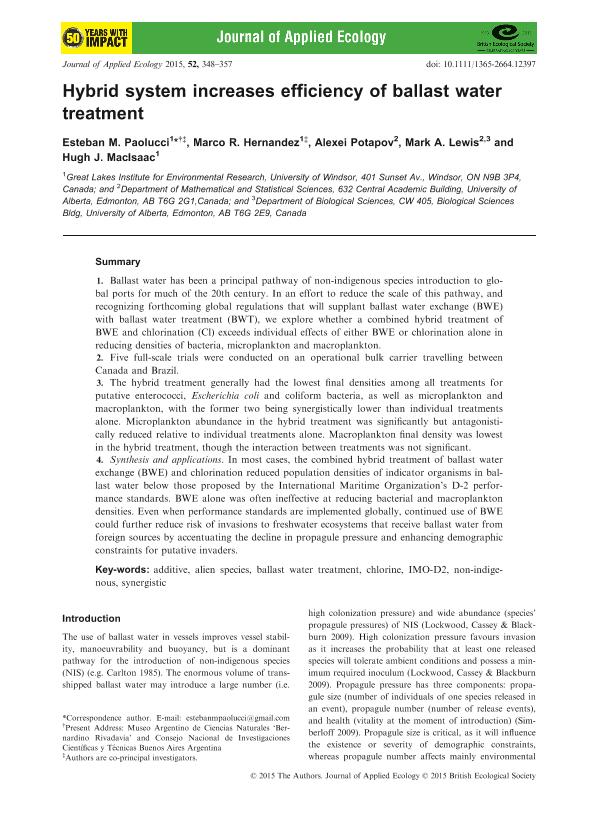Artículo
Hybrid system increases efficiency of ballast water treatment
Fecha de publicación:
04/2015
Editorial:
Wiley
Revista:
Journal of Applied Ecology
ISSN:
0021-8901
Idioma:
Inglés
Tipo de recurso:
Artículo publicado
Clasificación temática:
Resumen
1). Ballast water has been a principal pathway of non-indigenous species introduction to global ports for much of the 20th century. In an effort to reduce the scale of this pathway, and recognizing forthcoming global regulations that will supplant ballast water exchange (BWE) with ballast water treatment (BWT), we explore whether a combined hybrid treatment of BWE and chlorination (Cl) exceeds individual effects of either BWE or chlorination alone in reducing densities of bacteria, microplankton and macroplankton. 2). Five full-scale trials were conducted on an operational bulk carrier travelling between Canada and Brazil. 3). The hybrid treatment generally had the lowest final densities among all treatments for putative enterococci, Escherichia coli and coliform bacteria, as well as microplankton and macroplankton, with the former two being synergistically lower than individual treatments alone. Microplankton abundance in the hybrid treatment was significantly but antagonistically reduced relative to individual treatments alone. Macroplankton final density was lowest in the hybrid treatment, though the interaction between treatments was not significant. 4). Synthesis and applications. In most cases, the combined hybrid treatment of ballast water exchange (BWE) and chlorination reduced population densities of indicator organisms in ballast water below those proposed by the International Maritime Organization’s D-2 performance standards. BWE alone was often ineffective at reducing bacterial and macroplankton densities. Even when performance standards are implemented globally, continued use of BWE could further reduce risk of invasions to freshwater ecosystems that receive ballast water from foreign sources by accentuating the decline in propagule pressure and enhancing demographic constraints for putative invaders.
Archivos asociados
Licencia
Identificadores
Colecciones
Articulos(MACNBR)
Articulos de MUSEO ARG.DE CS.NAT "BERNARDINO RIVADAVIA"
Articulos de MUSEO ARG.DE CS.NAT "BERNARDINO RIVADAVIA"
Citación
Paolucci, Esteban Marcelo; Hernández, Marco R.; Potapov, Alexei ; Lewis, Mark A.; MacIsaac, Hugh J.; Hybrid system increases efficiency of ballast water treatment; Wiley; Journal of Applied Ecology; 52; 2; 4-2015; 348-357
Compartir
Altmétricas




